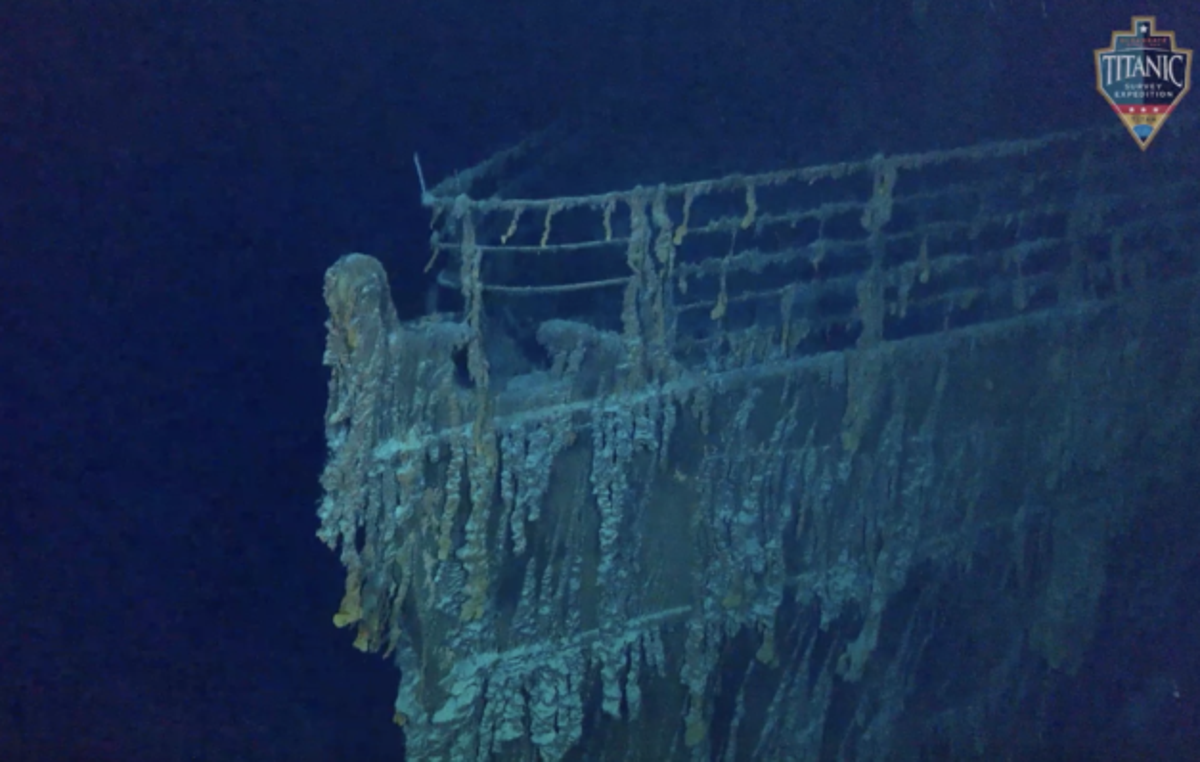
The rusty ruins of the Titanic are continuing to deteriorate and are “going through its natural consumption by the ocean”, according to teams surveying the shipwreck using submersible crafts.
Earlier expeditions to the sunken British passenger liner’s ruins in the North Atlantic Ocean had suggested the ship is “rapidly deteriorating” because of metal-eating bacteria, more than 100 years after it sank during its maiden voyage and killing 1,500 people.
OceanGate Expeditions, a company exploring the shipwreck site with its Titan submersible, confirmed last year that the famous ship’s mast had collapsed with increasing debris scattered around the 12,500ft-deep site.
Following his second yearly series of dives to the sunken ship, the company’s founder and chief Stockton Rush has said it is in worse condition than it was last year.
“It’s going through its natural consumption by the ocean,” Mr Rush has told GeekWire.
One of the main yearly missions of the Titan submersible, built to withstand extremely high pressures experienced almost 4,000m underwater, is to survey the Titanic shipwreck.
The submersible, that can be crewed by five people, has captured videos of the sunken ship’s ruins which are being analysed by researchers to look for different species and their densities in the deep-sea habitat surrounding the ship.
The research team, consisting of marine biologists, environmental DNA experts, maritime archaeologists and GIS mapping specialists, are hoping to answer a number of questions, including how artificial structures are impacted by the inhabitants of the ocean.
“This marriage of biology, ecology, archaeology, and GIS mapping is making a unique contribution to the study of the Titanic and, perhaps more importantly, the ocean’s floor. Today, we have better maps of the surface of the moon than we do of the Earth’s oceans and that needs to change,” Steve W Ross, OceanGate Expeditions Chief Scientist, had said in a statement.
“We know shipwrecks impact the ocean’s floor for decades or even centuries. The Titanic provides a unique deep-sea case study in how artificial structures are impacted by natural elements and inhabitants, in addition to how these structures support or influence marine ecosystems,” Dr Ross said.
Researchers said the shipwreck has created an “island of biodiversity” in the ocean area that is otherwise a muddy abyssal plain.
“The melding of these diverse areas of study that our scientific team brings to the Titanic Expedition will help us contribute to the study of our deep oceans as we share these data with the broader scientific and education communities,” Dr Ross had said in June.







